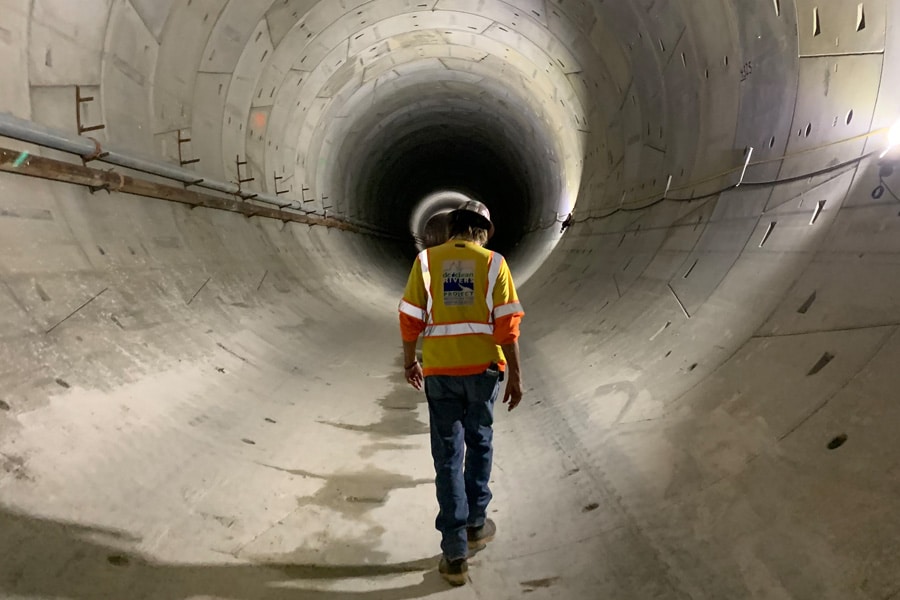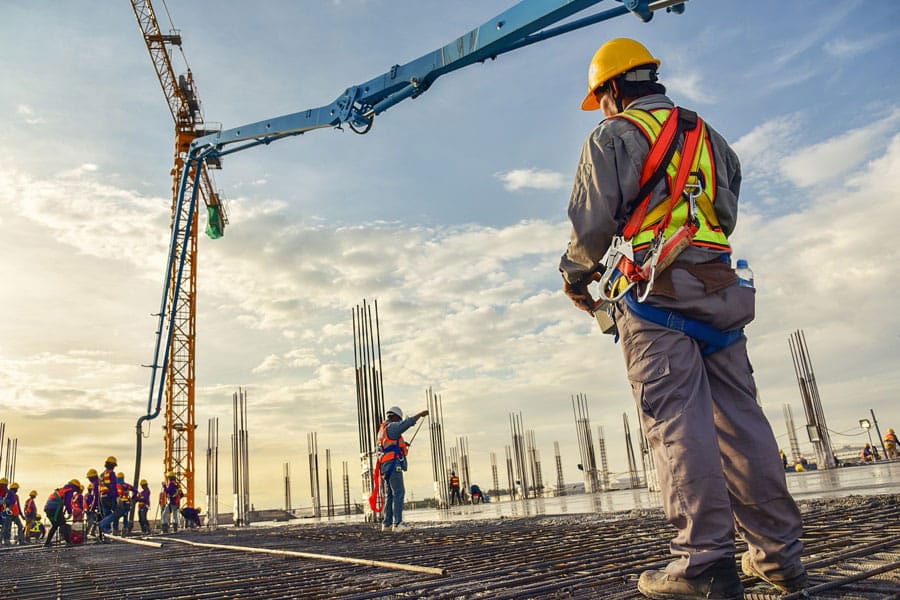As the world continues to grapple with climate change, almost every industry is working to identify ways to make its operations more environmentally sustainable.
The construction industry is among those investing in this effort, as the emissions produced from the building process are considerable. Cutting down on its emissions footprint and making the industry more sustainable overall is no easy feat, however. It’s an effort that will require innovations on many different components that go into the construction process.
The U.S. Green Building Council of Los Angeles is one such organization looking to spearhead the innovation needed to achieve the industry’s net zero goal. To this end, the group’s accelerator program aims to rapidly drive measurable adoption of net zero solutions today by funneling resources to promising pilot projects that are focused on eight key areas:
- Net zero carbon
- Energy
- Water
- Waste
- Building decarbonization
- Occupant wellness
- Sustainable infrastructure
- Clean construction
The nine-month accelerator program strives to achieve advances in these areas by pairing its cohort members with expert advisors who will help them promote their solutions to high-value prospects, while placing pilot projects to help these growing companies better prepare for scaled adoption.
Three of the accelerator program’s partners are scaling broad adoption of green, eco-friendly construction materials, the use of which inherently makes construction greener.
Colin Mangham, director of Net Zero Accelerator, said greener construction materials can be best defined as those with less embodied carbon—which is the carbon dioxide (CO₂) emissions associated with materials and construction processes throughout the whole lifecycle of a building or piece of infrastructure.
“This includes how the materials are sustainably harvested and/or produced, more thoughtfully transported (or produced onsite or near the point of application), implemented (in a waste-reducing manner) and ultimately recycled (or even upcycled into products of similar value),” he said.
Here’s a look at some of the pilot projects in the program:
A carbon-smart alternative to insulation
Hempitecture makes construction greener by replacing an important part of the building envelope—insulation—with a carbon-smart, bio-based, healthier alternative. “Insulation has the potential to reduce a building’s energy and embodied carbon footprint, but that cannot be accomplished using mineral fibers, glass fibers or foam insulation products,” said Tommy Gibbons, Hempitecture’s CIO and co-founder. “However, the industrial hemp and the other natural fibers we use have comparatively low carbon footprints and are manufactured in a low-energy manner while providing a more biodegradable end-of-life use case.”
Hempitecture’s products are also engineered to handle heat and moisture more effectively in the wall cavity to reduce the risk of mold. It also treats insulation with a sustainable, bio-based fire retardant that meets class A fire resistance standards.
Framing system captures more atmospheric carbon
BamCore’s Prime Wall is a beyond-zero carbon footprint framing system for commercial and residential low-rise construction. This means that the materials used in the framing system capture and store more atmospheric carbon than is emitted during harvesting, manufacturing and construction—five to 10 times more than conventional 2 x 6 construction.
“The Prime Wall eliminates 90% of studs, headers and posts that cause thermal bridging in conventional 2 x 6, for an extremely energy-efficient building envelope,” said Tobe Sheldon, BamCore’s chief sustainability officer. “Other high embodied carbon materials like drywall and continuous exterior rigid foam insulation are also eliminated or greatly reduced.”
Using timber bamboo, industrialized construction techniques, nesting routines and interactive 3D building information modeling (BIM) technology, BamCore’s high-performance framing system reduces waste, increases productivity and allows developers to build in half the time with half the crew without cranes, according to Sheldon.
Technology reduces the carbon footprint of cement
Carbon Upcycling Technologies is a waste and carbon utilization company unlocking a new frontier of circular materials, tackling problems like climate change and industrial waste. Applying its technology platform, the company enables hard-to-decarbonize industries to transform local industrial byproducts and natural materials into superior additives.
“Our first massive market is concrete, which is the source of 8% of global CO₂ emissions, and that number continues to grow,” said Kristin Skelton, Carbon Upcycling Technologies’ business development associate. “Our novel technology reduces the carbon footprint of cement, sequesters carbon and improves concrete performance. We do this by opening up a new class of locally available, carbon-sequestering cement replacements. With Carbon Upcycling, cement producers can now create a superior product using local industrial byproducts and natural materials and save the planet at the same time.”
Carbon Upcycling has tested and verified more than 30 feedstocks from around the world and shown that it can capture 3%-20% CO₂ by mass of the end product and can improve strength and durability of concrete by upwards of 20%, ultimately resulting in concrete that has a 30% lower carbon footprint.
















